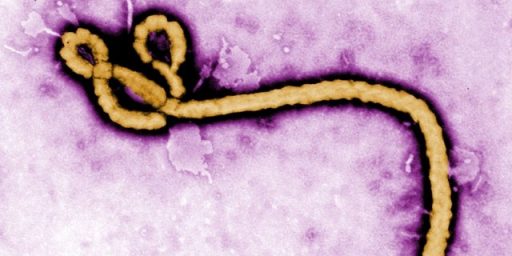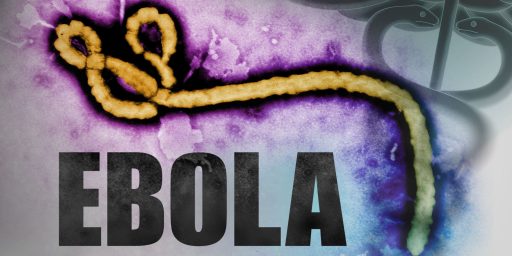CDC: Ebola Cases Could Reach 1.4 Million By January
The Centers For Disease Control has a particularly grim forecast for Africa’s ongoing Ebola epidemic:
Yet another set of ominous projections about the Ebola epidemic in West Africa was released Tuesday, in a report from the Centers for Disease Control and Prevention that gave worst- and best-case estimates for Liberia and Sierra Leone based on computer modeling.
In the worst-case scenario, Liberia and Sierra Leone could have 21,000 cases of Ebola by Sept. 30 and 1.4 million cases by Jan. 20 if the disease keeps following its current trajectory, without effective methods to contain it. These figures take into account the fact that many cases go undetected, and estimate that there are actually 2.5 times as many as reported.
The report does not include figures for Guinea because case counts there have gone up and down in ways that cannot be reliably modeled.
In the best-case model — which assumes that the dead are buried safely and that 70 percent of patients are treated in settings that reduce the risk of transmission — the epidemic in both countries would be “almost ended” by Jan. 20, the report said. It showed the proportion of patients now in such settings as about 18 percent in Liberia and 40 percent in Sierra Leone.
“My gut feeling is, the actions we’re taking now are going to make that worst-case scenario not come to pass,” Dr. Thomas R. Frieden, the C.D.C. director, said in a telephone interview. “But it’s important to understand that it could happen.”
The current official case count is 5,843, including 2,803 deaths, according to the World Health Organization.
The W.H.O. published its own revised estimates of the outbreak on Monday, predicting more than 20,000 cases by Nov. 2 if control does not improve. That figure is more conservative than the one from the C.D.C., but the W.H.O. report noted that many cases were unreported and said that without effective help, the three most affected countries would soon be reporting thousands of cases and deaths per week. It said its projections were similar to those from the C.D.C.
The W.H.O. report also, for the first time, raised the possibility that the disease would not be stopped but would become endemic in West Africa, meaning that it could become a constant presence there. The report from the C.D.C. did not discuss that possibility, but it is something that health officials have feared all along, and the reason they say help is needed so quickly.
Given the stepped up international response, it’s hopefully likely that the worst case scenario won’t pan out, but it’s worth noting that this outbreak seems to have lasted far longer than previous ones so the question of whether were entering an era in which Ebola is an endemic problem rather than something that pops up from time to time remains an open one. How that will impact the already unstable nations in western Africa is something we may just have to wait to see.



If you are the charitable type, donations have a tremendous impact on medical relief organizations’ ability to contain outbreaks. Les Medecins Sans Frontieres are doing the majority of the front line work. They are fantastic stewards of donations, and they turn your donations into lifesaving medicine, equipment, and medical faculty very quickly.
https://donate.doctorswithoutborders.org/onetime.cfm